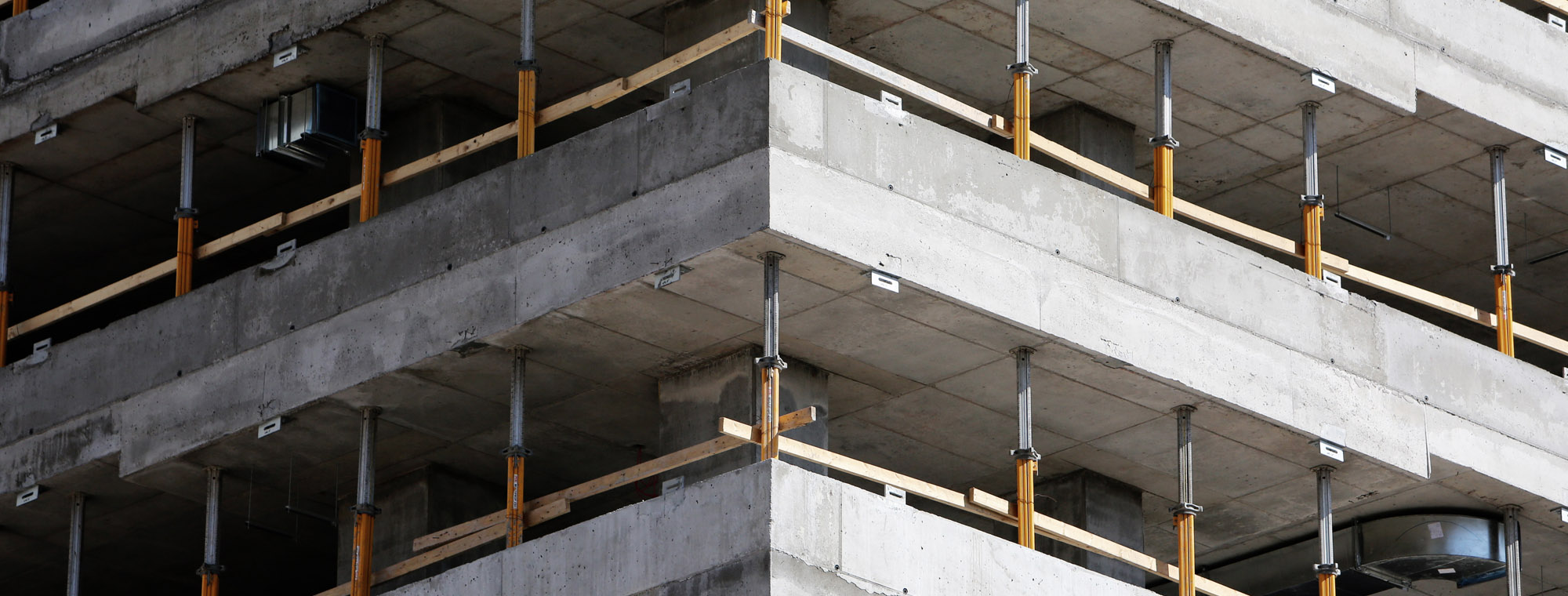
Extending the life of concrete structures
Durability of prestressed concrete structures is mainly influenced by impregnation of water, oxygen, carbon dioxide and corrosive salts into the inner structure of concrete, in combination with temperature changes. Against this effect, these structures are protected by protective coatings, whose ingredients are often organic binders.
Applications FN® functional coating on the protective coating concrete structure creates on the surface of a thin layer (10-30 mm) which perfectly blocks the surface from ultraviolet radiation.
This greatly slows down the erosion of the binder and significantly extend the life and functionality of the protective coating.
The formed mineral FN® layer is inert, and thus resistant to water, salts and other chemicals. UV unblocking comes from the photoactive nanoparticles of titanium dioxide (TiO2). Already 3μm surface layer FN® unblocked (absorbed) is virtually 100% UV.
FN® coating layer also ensures an exceptionally strong protection due to the photocatalytic effect, a reliable and long term protection of the surface of concrete structures against blackening due to soot and other particles suspended in the air and prevents the surface of the concrete from mold and algae settlling and subsequently blocks the growth moss and lichen, that accelerate erosion of concrete.
Maintain a clean appearance on aestetic coverings made from concrete
Application of functional coating FN®1 Transparent to the surface of exposed concrete will ensure its long-term protection against mold and algae establishment and future growth of moss and lichens. In addition, long-term surface remains clean (all dirt is broken down and dispersed in the air). FN® coatings manufacturer provides a functional guarantees clean look up to 10 years. Transparent coating FN®, due to its transparency and a matte finish, perfectly preserves color and structuring the surface and allow to fully exploit the potential of aesthetic architectural concrete and other materials. If interested customer is faced concrete can be treated as well-colored variants paint FN®1 and FN®1 Transparent and adjusted in this manner resulting color impression of the treated area without being suppressing the look of its structure.
Compensatory measures to reduce the impact of buildings on the environmentí
Concrete structures provided FN® coatings also perform, thanks to a very strong photocatalytic effect, ecological function active degradation NOx and other harmful pollutants from the air. Studies conducted by staff ASCR show that one square meter surface of the concrete structure is able to remove in one year under conditions of polluted urban environment of the air more than 150 grams of nitrogen oxide (average air pollution NOx 30μg / m3 air). For a more visual way to understand the power: a 15 square meter patch of wall coated with FN will offset one diesel automobile travelling 20,000 kilometers, or roughly one year of use. Designers, developers, investors and authorities now can protect the environment and offer efficient compensatory measures to reduce the impact of buildings on the environment.
Protective action FN® layer works against UV radiation on vertical surfaces, which are less exposed to mechanical erosion weathering, for at least 15 years and can be further extended by performing another function FN® coating, after which time an additional 15 years.
The most detrimental effects of repeated freezing and thawing, which leads to disturbances of the concrete structure. Frost damage usually occurs at the wetted surfaces of the horizontal or vertical surfaces of structures extending from the water. Freezing water in the pores during the conversion into ice expands. The expansion causes local tension that breaks concrete. Concrete crumbles inward. The most frequent degradation effects are, among others. Concrete degradation action of acidic gases, mainly carbonation, chlorides and effects of corrosion.
Concrete resistance against these influences affecting primarily quality of the basic ingredients – cement, water and aggregate.
Erosive effects can further restrict treatment of the concrete protective coating that prevents penetration of water, carbon dioxide and other substances into its inner structure. All protective coatings are based on organic binders (polymers, alkyds, epoxies, polyurethanes or acrylates). Resistance of protective coatings to the external environment, however, is not unlimited. Their protection weakens over time due to degradation of the binder. Its main cause is the effect ultra violet radiation, which is a natural component of daylight.
FN® functional coating forms a highly oxidizing layer as a result of extremely strong photocatalytic TiO2 nanoparticles. Consequently, the surface protection of concrete structures against their gradual soiling dust, soot and exhaust fumes released into the air transportation, heating and industrial production. FN® surface blocks growth of green algae and deposits on it of mosses and lichens, which reinforces the effect of the erosive action on the concrete.
Highl oxidation FN® surface layer additionally & effectively cleans the air of pollutants from the exhaust gases and industrial production. Concrete structures, those around roads and on bridges, overpasses, and other transport structures provided with a functional coating FN® can thus actively reduce the quantity of NOx and VOC pollutants. One square meter of FN® area per year could be reduced by 60% the content of these substances in three million cubic meters of air!






